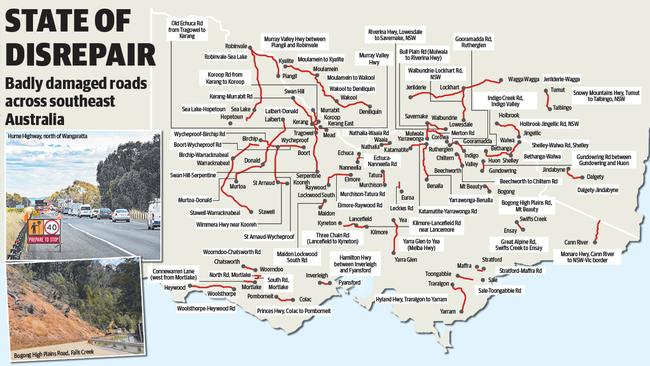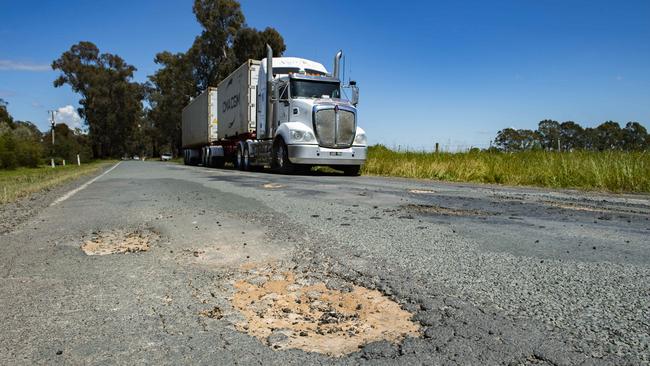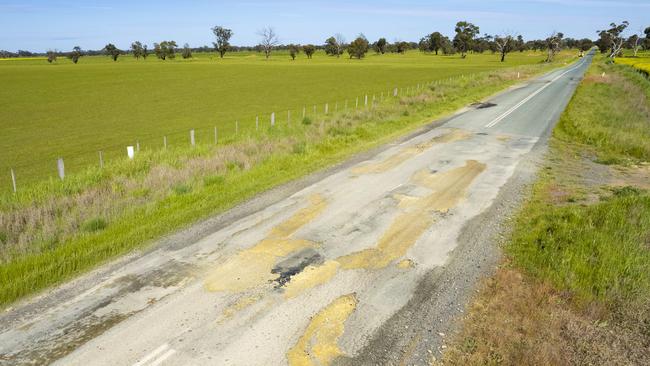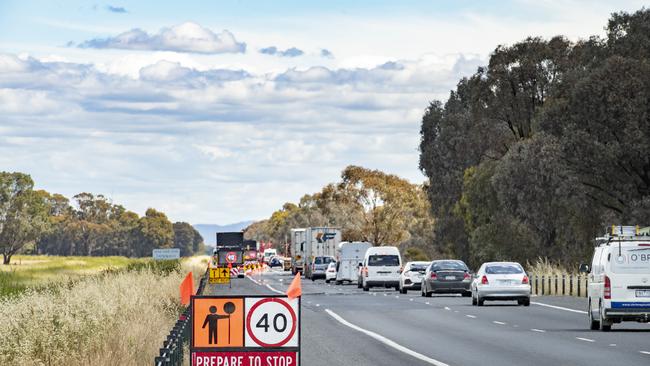Roads to ruin: Farmers want politics stripped from road funding decisions
Regional drivers are being forced to play road lotto on Victoria’s obliterated, potholed, and washed away roads, raising safety fears with repair works to drag well into next year. See the worst.
Regional drivers are being forced to play road lotto on Victoria’s obliterated, potholed, and washed away roads, raising safety fears with repair works to drag well into 2023.
The re-elected Victorian government is under immediate pressure to fix the state’s collapsed network as industry leaders call for increased funding and a cooperative, bipartisan approach from all levels of government in spending it.
Road authorities have filled 92,000 potholes in Victoria in recent weeks in what has been labelled a band-aid approach.

From the Alps to the Wimmera, Gippsland to the Goldfields, 570 Victorian roads remain closed following months of flooding rains and waiting urgent repairs to bridges, culverts and bitumen. Many open are unfit for cars, let alone semi-trailers loaded with the most expensive winter crop ever planted.

Earlier this month, Victorian and NSW regional councils declared a roads emergency
as they struggled to find funds to repair their 300,000km road systems.
Australian Trucking Association chairman David Smith said the safety of motorists was paramount in demanding government supercharge repairs as families prepare for summer holidays.
“Fixing roads isn’t very sexy and opening new roads is very appealing, but it’s gone too far, funding must be directed to where it is needed most. We cannot keep driving around dodging potholes,” he said.
While state and federal governments were quick with flood emergency packages, of the billions of dollars hardcoded into annual budgets for roads most goes to metropolitan works with regions scraping for every cent.
This is despite shire councils, with a forced rates cap increase of only 2.5 per cent, managing nearly 90 per cent of the Victoria’s roads.
An investigation by The Weekly Times shows, while no region is spared from the roads crisis, the most damaged follow an S-shape where recent flooding hit.
Starting in Victoria’s North East and travelling along the Murray River across southern NSW and the Riverina, dropping through the Goulburn Valley and then out to the southeast corner.
National Irrigators Council chairman and southern Riverina rice grower Jeremy Morton said many Moulamein, Wakool and Deniliquin roads “look like we’re living in a third world country, but we’re one of the wealthiest nations on the planet”.
The backlog of maintenance projects for rural and regional roads runs into the billions, Mr Morton said farmers were paying enough in rates due to increased farmland values to be called on to further fund repairs.
“There is no way in hell us local ratepayers can foot the bill for this. They would have to put the rates up 100-fold. We’ve got councils trying to do special rate variations, but farmers are already paying a fortune in rates,” he said.

While governments struggle to fix visually damaged roads, Moyne Shire Councillor Ian Smith is as concerned by those reopened to traffic after flood waters have receded. Roads softened by water and ripe for the weight of road trains to detonate the hydrostatic pressure built up within the crushed rocks laying beneath bitumen tops.
“It will get much worse before it gets better, the roads are going to be very miserable by mid-February after the harvest,” he said. Victoria’s southwest runs hot with local, tourist, dairy and grain traffic.”
Many damaged roads link with crucial freight routes and rail links, with closures fracturing connectivity.
National Farmers’ Federation president Fiona Simson warned a $100 billion agriculture sector by 2030 target would not materialise, particularly if supply chain woes convince overseas buyers to trade elsewhere, without “a sustainable solution for funding road infrastructure.”
Victorian Farmers Federation grains council president Ashley Fraser said improved crop yields through farming advancements demanded infrastructure capable of handling increasing productivity.
Both agreed the three levels of government must remove politics from road funding decision-making to ensure all rural communities had adequate resources for urgent repairs and rebuilding infrastructure back better with the predicted increase in climate change events.
Cr Smith said government’s drip-feeding grants to maintain council roads, states controlling other regional roads, commonwealth-led programs administered by states, fluctuating funding and reducing speeds instead of repairing problems had reached a use-by date.
“Many regional roads were in bad repair before flooding made them much worse, people are calling and going crook about the roads, saying they’re not safe. But our work crews are still waiting for $10.3 million promised by the Morrison government in April under the remote roads program,” he said.
“Then there’s the Woolthorpe – Heywood Rd, it’s in shocking condition but we cannot get the state government to fix it, it is their road, not ours”.





